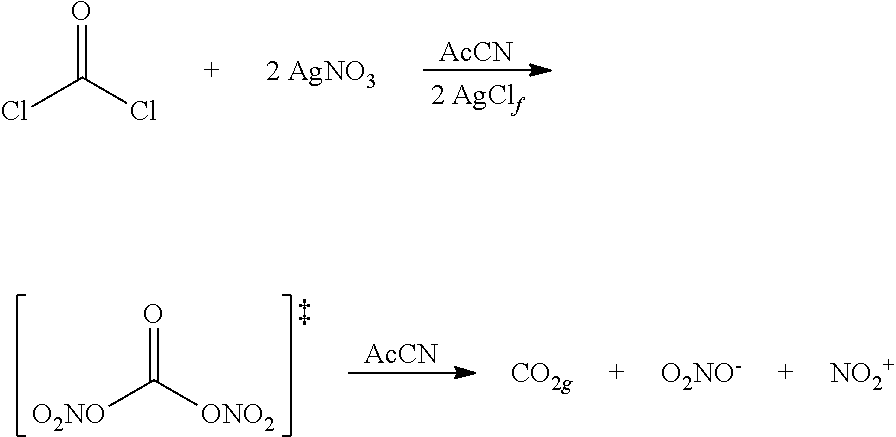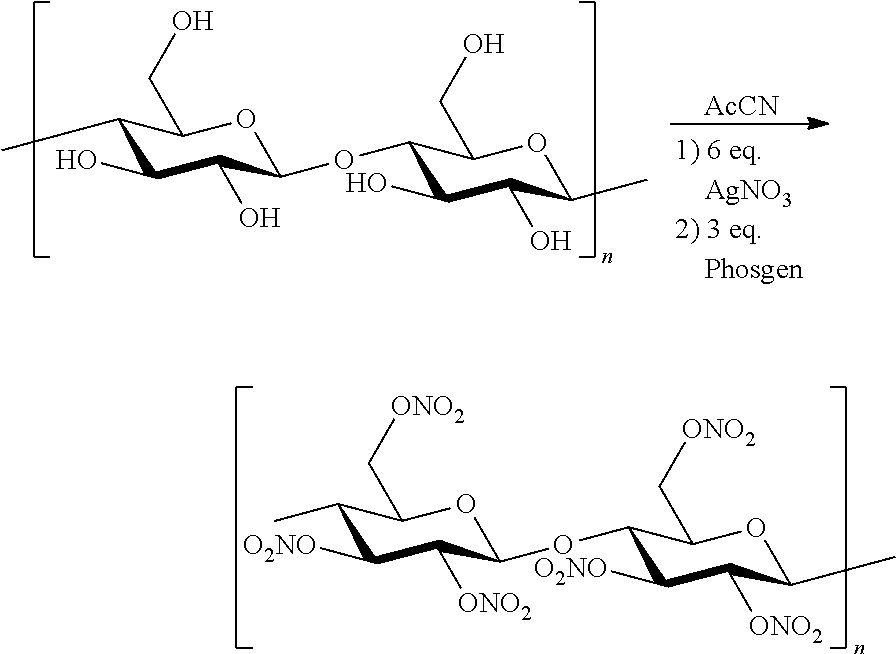Novel Method for Directly Nitration of OH-, SH-and NHR-Functions in Organic Molecules by Means of in Situ Generated Carbonic Acid Dinitrate
a carbonic acid dinitrate and organic molecule technology, applied in the preparation of sugar derivatives, saccharide with acyclic radicals, sugar derivatives, etc., can solve the problems of oxidizing reactants, explosive hazards, complex temperature programs,
- Summary
- Abstract
- Description
- Claims
- Application Information
AI Technical Summary
Problems solved by technology
Method used
Image
Examples
Embodiment Construction
[0007]Cellulose is suspended in acetonitrile, the corresponding amount of silver nitrate is added while stirring. Subsequently the phosgene species is carefully added dropwise so that the system temperature does not exceed 45° C. After one hour of stirring the precipitating silver salt is filtered off and the filtrate is evaporated in vacuo. Crude products were taken up in specific solvents due to their solubility depending on degree of nitration (i.e. the higher the nitration grade the lower polarity required). In the case of collodium the product can be obtained as a film in variable thickness from acetone.
[0008]A specific degree of nitration can be achieved by choice of reaction stochiometry, with regards to the molar equivalents of silver nitrate / phosgene species. 4 equivalents of silver nitrate with 2 equivalents of phosgene yield collodium with a slightly increased nitration grade then a comparable commercial available product (Fluka 09986). It is exam...
PUM
| Property | Measurement | Unit |
|---|---|---|
| temperature | aaaaa | aaaaa |
| temperature | aaaaa | aaaaa |
| soluble | aaaaa | aaaaa |
Abstract
Description
Claims
Application Information
 Login to View More
Login to View More - R&D
- Intellectual Property
- Life Sciences
- Materials
- Tech Scout
- Unparalleled Data Quality
- Higher Quality Content
- 60% Fewer Hallucinations
Browse by: Latest US Patents, China's latest patents, Technical Efficacy Thesaurus, Application Domain, Technology Topic, Popular Technical Reports.
© 2025 PatSnap. All rights reserved.Legal|Privacy policy|Modern Slavery Act Transparency Statement|Sitemap|About US| Contact US: help@patsnap.com



